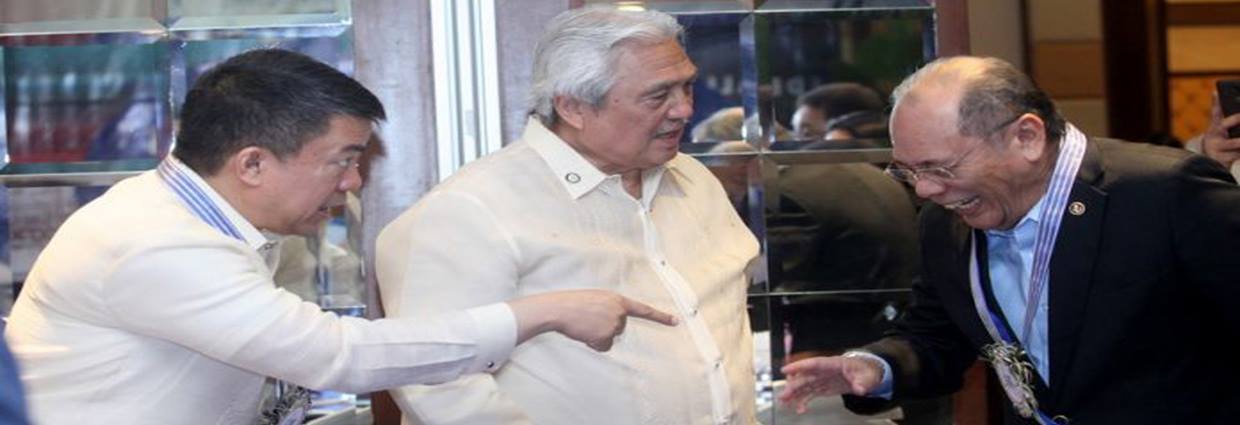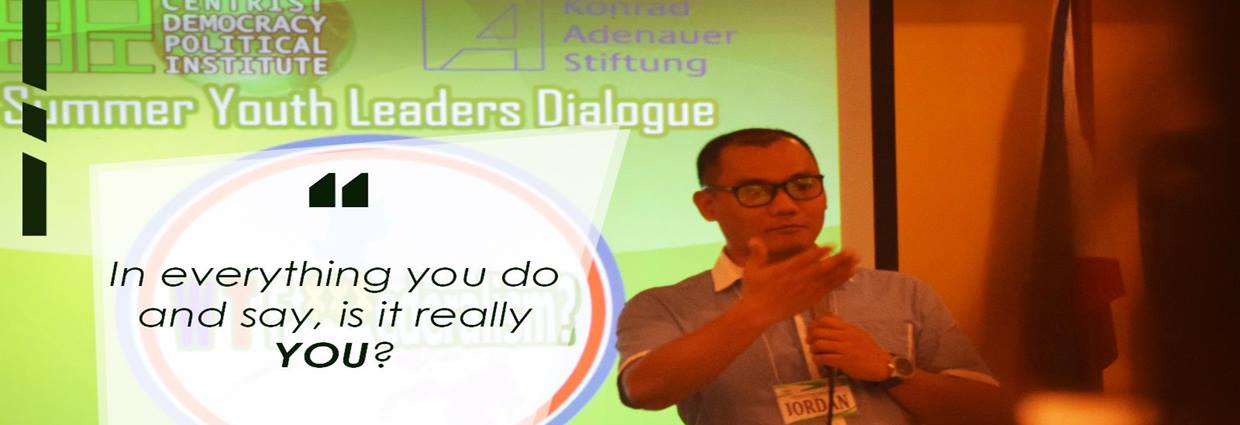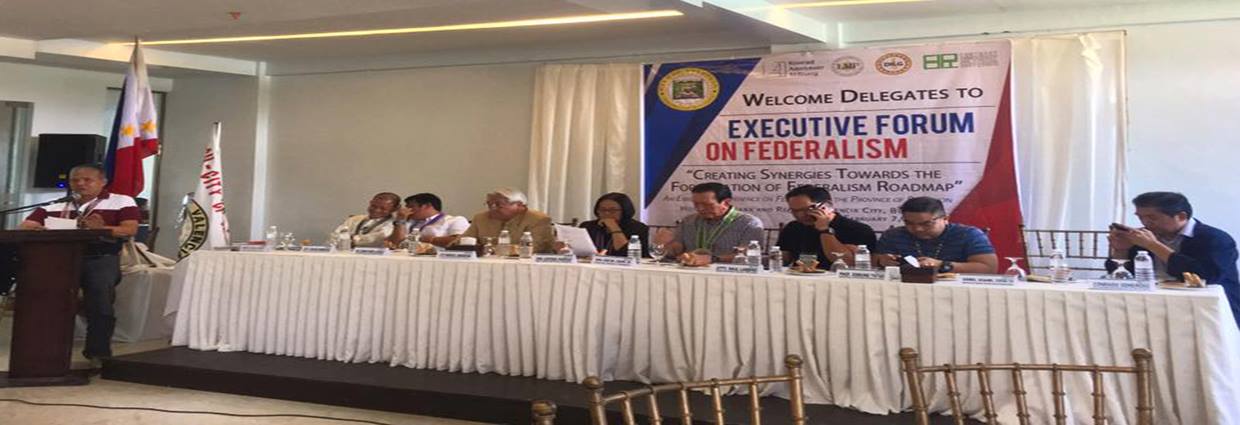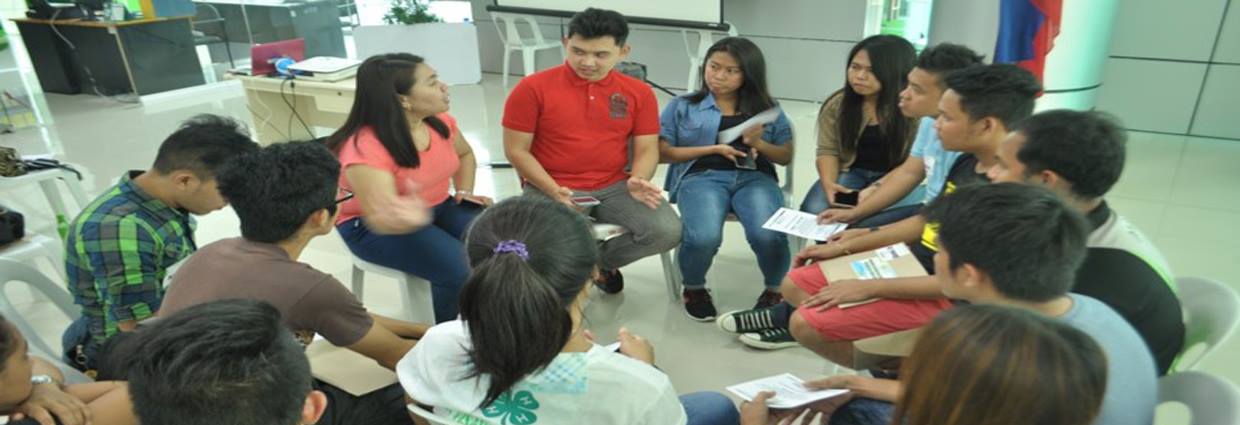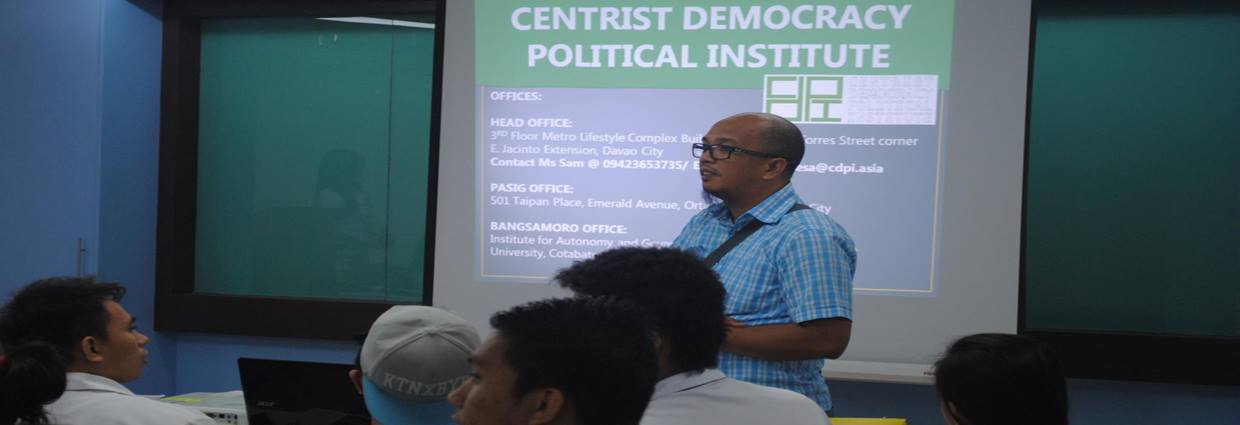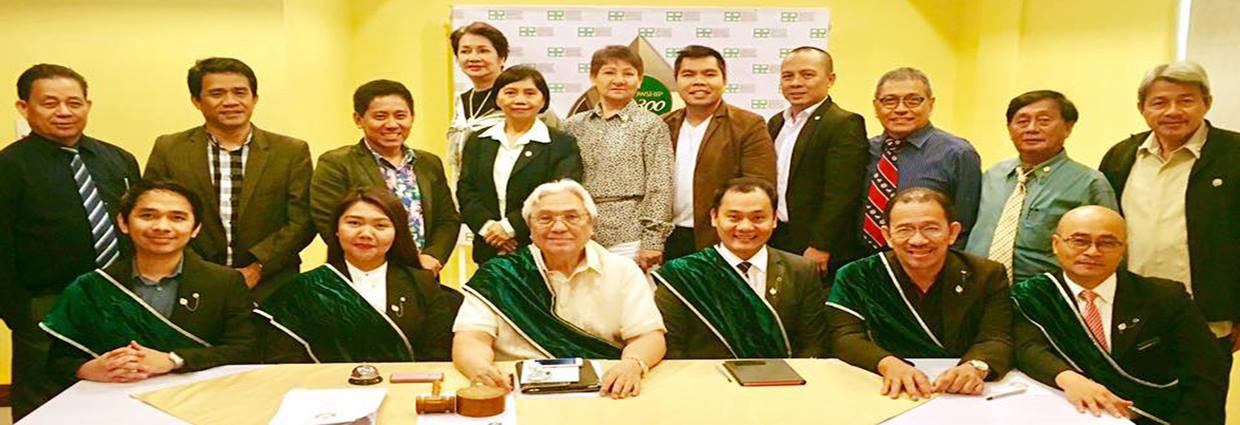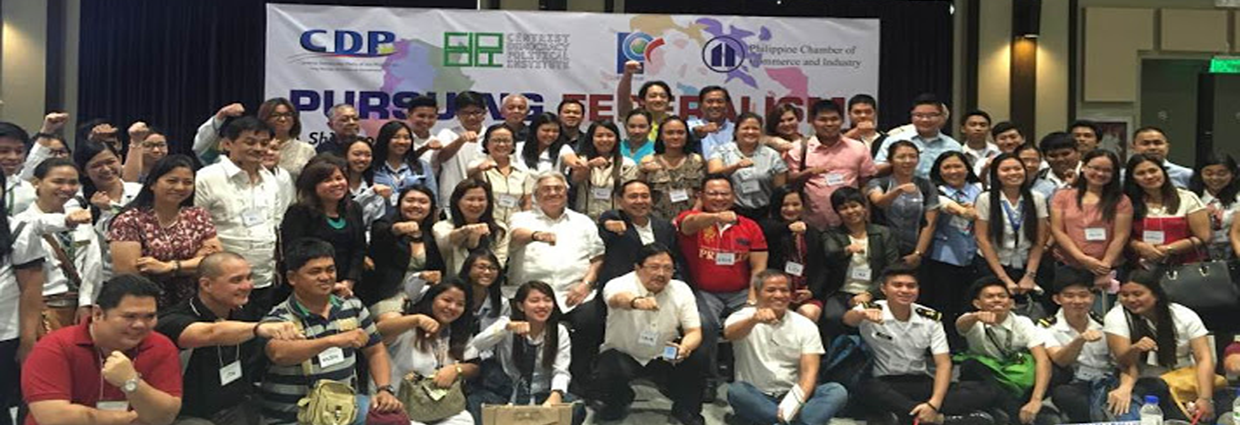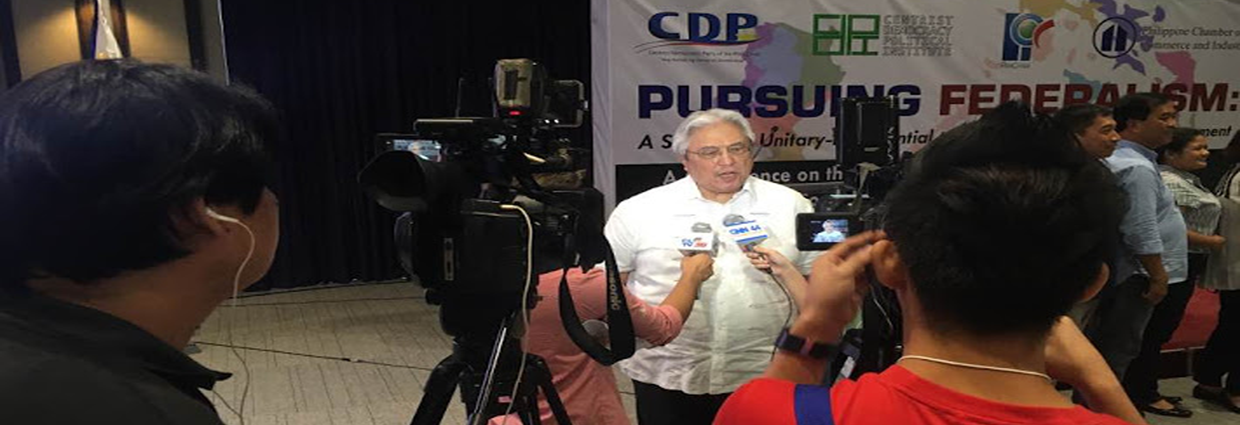End the NFA monopoly!
No impending crisis. In “The global market post – 2008 rice crisis era,” Rice Today, April-June 2017, Samarendu Mohanty writes: “The 2007-08 rice price spike seems like a distant dream now considering the calmness in the rice market in the past few years despite El Niño and other weather-related scares. Rice prices in the international market have been very stable after a steep decline in 2013. The record production in 2016-17 … has kept the prices stable.” The world rice inventory is 20 percent of total demand, which is a healthy 5 percent above what it was in the rice price crisis in 2007.
Dr. Mohanty heads the Social Science Division of the International Rice Research Institute (Irri). He recently reported that Philippine rice stocks are sufficient for 46 days and, moreover, that annual rice consumption per Filipino has fallen by about 20 kilos in the past 10 years. Per capita consumption was below 100 kilograms in the 1960s-1990s, and then rose to over 140 kg by 2007, but is close to 120 kg now.
The government’s Rice and Corn Situation and Outlook expects production in the second quarter of 2017 to be 7.7 percent above that of the first quarter, which in turn was 15.2 percent above that of the first quarter in 2016. Meanwhile, the average Philippine retail price of regular milled rice was 37.08 per kilo in the second week of April 2017, or only 1.0 percent over that at the same time last year.
“Rice from abroad is cheaper than domestically produced rice.” This is bluntly stated by economists Roehlano M. Briones, Ivory Myka Galang, and Lovely Ann Tolin, of the Philippine Institute of Development Studies, in “Quantitative restrictions on rice imports: issues and alternatives,” PIDS Policy Notes, March 2017.
The production cost per kg of palay (rough rice) is only P6.53 in Vietnam, versus P12.41 in the Philippines. The root cause is inadequate geography—the lack of wide, flat irrigated plains—coupled with a fast-growing population. In short, it does not make economic sense for the Philippines to aim for food security based on domestic production.
However, since time immemorial, the National Food Authority has had the sole legal authority to import rice. Unfortunately, you or I or any ordinary person may not simply place an order for rice from abroad. Its legal monopoly gives the NFA the leverage to exact huge favors/rents/bribes from those to whom it gives—more accurately, sells—licenses to import. This leverage is what the quarreling is actually about.
The simplest, and best, solution is to allow anyone to freely import (as well as export, when called for) rice of any amount, at his own expense and risk. This is the stance of the community of professional Filipino economists, including the Foundation for Economic Freedom.
This column is somewhat ex cathedra since I’ve been a rice economist. I apprenticed at Irri, did my master’s on the response of rice farmers to price, and my doctorate on the diffusion of new rice varieties in Central Luzon. I handled agricultural economics at the UP School of Economics, until Arsenio Balisacan took over. I worked with Rafael Salas, when he was Ferdinand Marcos’ “rice czar,” and also with the Rice and Corn Administration.
I once estimated that the annual retail price of a ganta of rice in Manila in 1956-67 fell by only 1.54 centavos for every extra 100,000 tons of imports, compared to 9.73 centavos for the same amount of production. The reason the price-impact of imports was so small? The market knew that rice was imported only during election years. See “The effect of importation on the price of rice,” Philippine Review of Business and Economics, December 1968.
Philippine economy to lead Southeast Asia growth, IMF says
Gross domestic product will likely grow 6.8 percent this year and 6.9 percent in 2018, outpacing second-placer Vietnam, and followed by Indonesia, Thailand and Malaysia, the IMF said in a report Tuesday.
Including other developing economies in Asia, the Philippines will grow faster than China, but will fall behind the region’s leader, India, the IMF said.
“In these economies, the near-term pickup in growth is underpinned to a significant extent by stronger domestic demand and, in the Philippines, by higher public spending in particular,” the lender said.
On Tuesday, President Rodrigo Duterte’s economic managers unveiled “Dutertenomics,” an ambitious plan to grow the economy by building P8-trillion in infrastructure.
These include Mindanao’s first railway and a subway for Metro Manila, where chronic traffic jams result in daily economic losses of P2.4 billion according to a Japanese study.
Economic Planning Secretary Ernesto Pernia said the government was targeting growth of 6.5 to 7.5 percent this year and 7 to 8 percent next year.
"One of the thrusts of the Philippine Development Plan is accelerating strategic infrastructure development. This is the bedrock of the Philippine Development Plan towards an economy that continues to grow and in an inclusive fashion," he said on Tuesday.
First quarter GDP data will be released in May. The economy grew 6.9 percent in 2016.
Of queridas and governance
EH Diyos ko naman! Kayo naman eh. Sino ba’ng walang girlfriend?” (Oh, my God! Come on. Who does not have a girlfriend?) This was House Speaker Pantaleon Alvarez speaking to reporters on March 30, 2017 (abs-cbn.com).
But first a disclaimer: I don’t have a querida, never had one. At the ripe age of seven-plus decades, I thought of having one and sought the permission of my wife, Sylvia. She laughed! That was her reaction.
Part 1 of this two-part article discussed the women in history who exerted influence on men in public life who were not their husbands; from the ancient Greek Hetaerae to the French courtesans to the geishas and even the women of the papacy.
This article will focus on the implications of the recent public outrages by the mistresses of politically powerful persons in government; and the pronouncements by the principals to justify what could be a justiciable offense of concubinage and betrayal of public trust. I leave this issue for the legal minds to ponder. I will attempt to explain the cultural and moral underpinnings of these relationships.
Querida system
Tomes have been written by authors dissecting this phenomenon from different viewpoints: from the cultural, moral and religious aspects. Simply put, the querida system is an arrangement where a married man takes in a mistress more often leading to the establishment of another family, keeping this undisclosed from the legitimate wife and family.
Anthropologists posit that in prehistoric and ancient times, the union between a female and a male is simply a mechanism for the survival of the species. It has of course undergone changes over time assigning to the male the prerogatives of dominance over the female in the propagation of the species. This arrangement over eons became entrenched, with the male protecting the female and his issues.
Anthropologists and moralists have differed on how to define this union. But they may have reached an intellectual rapprochement with the injection of the concept of religion, where morality was more defined and categorized. But even in the dawn of formal religion, Judaism, Christianity and later Islam had conflicting takes on this union – which now took upon itself a certain legitimacy through the rituals and formality of “marriage”.
It is in the development of Catholicism that the union of man and woman – the “sacrament of marriage” is scrutinized and the parallel context of infidelity. Catholic doctrine interpreted Jesus’ attendance in the marriage ceremony in Cana as the approval of marriage between a man and a woman as being good. But even during the intervening years, the law of Moses on divorce still prevailed. Only in the Council of Verona in 1184 was marriage instituted as a sacrament. The medieval Catholic Church’s imposition of the sanctity of marriage and the indissolubility of the union was equated to the fidelity of Christ to his church.
Fast forward to the present. The question on the streets is that marriage—how sacred it is supposed to be in the eyes of the Catholic Church is still a union of mere mortals. What mechanism is created for marriage dissolution when love–the edifying modern ingredient that binds and coats marriages—is no longer present. A hundred countries spanning the religious spectrum have arrived at such mechanism. Only the Philippines and the Vatican believe that marriages “technically are indissoluble”, thus no divorce law was ever passed. This is attributed more to the power of the Church to sway the political leadership to its position. Our dysfunctional laws on marriage buttressed by the power and influence of the Church are crafted to preserve an impossible union, no matter what. A half-hearted solution “legal separation,” was introduced. The anomaly is the Church allows dissolution only within strictest limits. But statistics show mostly the rich and the well-connected can afford to avail of it. This is one of the main reasons why the querida system is resorted to by countless of Filipino males, the easier path of escape from an oppressively untenable union.
What concerns us now is not simply the double standard of morality, that Filipino society tolerates men indulging in discreet extra-marital relations while women are condemned if they do the same, but the objection to the flaunting of such relationships by men gifted by the electorate to serve and govern. We boast that we are a society that believes in the rule of law. And by these precepts, our leadership must be held to its high standards.
The Revised Penal Code decrees such behavior as criminal and prescribes jail and other penalties for the offense. The Code of Conduct and Ethical Standards for Public Officials and Employees (RA 6713) proscribe such behavior as being inimical to the public interest.
There are so many examples of these peculiar open arrangements by powerful personages vested with political power, beginning with Speaker Alvarez and his erstwhile ally Congressman Floirendo, the public squabble of whose queridas started a vortex of speculation in social media. Alvarez’s infamous declaration quoted above was answered by Congressman Tony Boy by his profound silence. But his mistress was not bereft of words in his defense.
Just recently, the Office of the Ombudsman ordered Aklan Mayor Denny Refol suspended for six months because of an extramarital affair. Like Alvarez, Refol in his defense said that only few politicians have no mistresses or affairs.
But the more famous ones have not been touched by the law: former President Joseph Estrada, former senator Ramon Revilla Sr., even the late dictator Ferdinand Marcos.
And of course, the most celebrated is our current President, the Deegong who has not only defended Alvarez but has been open about his “many girlfriends.”
Sadly, our government officials with extramarital affairs justify such liaisons as totally irrelevant from the efficacy of good governance. Their cynical defense simply describes a corrupt moral judgment and the depth of ethical ignorance about good governance. It ridicules the rule of law – that everyone is equal and none above.
Some have advanced the idea that the law needs changing and should allow divorce as one mechanism for marriage dissolution—perhaps offering a partial solution to the querida problem.
Firetrucks deal to push through, after all
Epimaco Densing III, DILG Assistant Secretary for Plans and Programs, said the project to buy 76 Rosenbauer firetrucks would continue, with 14 units expected to arrive at the Batangas City port within the day.
“It will proceed. There is no TRO (temporary restraining order). There was a question about the first delivery but the Supreme Court did not issue a TRO,” Densing said. “And this is a perfected contract. We’re just implementing a perfected contract.”
The DILG had acquired an initial batch of Rosenbauer firetrucks under former Interior Secretary Mar Roxas in 2013 but this was questioned before the Supreme Court due to allegations of overpricing.
Sueno went to Austria in January for the acquisition of another batch of 76 firetrucks.
Critics claimed that Sueno ignored a DILG legal opinion advising prudence in paying for the first batch of firetrucks under Roxas since there was a pending case in the Supreme Court.
President Duterte questioned Sueno about the DILG legal opinion but the former DILG chief claimed he had not seen it. Mr. Duterte then fired Sueno.
Densing said however that the two contracts to acquire the firetrucks were cleared by the Department of Finance, the Department of Justice, the Bangko Sentral ng Pilipinas, and the National Economic Development Authority.
“The DILG legal opinion advised prudence in paying for the project but the first scheduled payment is still (in 2021) under the terms of the loan,” he said.“Let us also remember that this is a perfected contract and a government-to-government transaction. Austria is one of the countries in the world which has the least corrupt practices in the world,” he said.
“They will not have a contract with our government and have corrupt activities in between,” he added.
Densing also said that the firetrucks would actually cost P3.8 million based on the favorable loan terms that the government got.
“So, compared to the P7 million we would pay if we buy a firetruck on the spot, each Rosenbauer firetruck will cost only P3.8 million. So, it’s more affordable and it’s of high quality,” he added.
Densing said he wasn’t aware if the President’s concerns were addressed.
“This is an issue (between) the President and former Secretary Sueno and again, whoever the president wants removed from his Cabinet, that’s his choice,” Densing said.
“Nobody can question it. He’s not even required to investigate,” he added.
But lawyer Leo Romero, who had petitioned the Supreme Court to stop the deal, insisted that President Duterte fired Sueno precisely for the anomalies surrounding the purchases.
In a five-page letter dated April 17, Romero reminded acting Interior Secretary Catalino Cuy that it was “public knowledge” that Sueno was fired “upon the ‘first whiff’ of graft and corruption in the questioned trip to Austria for meetings and negotiations with the officials of Rosenbauer.”
He said that Bureau of Fire Protection chief Bobby Baruelo issued an order in March directing the BFP Inspection and Acceptance Committee to proceed with the acquisition despite the controversy.
Baruelo’s order was “bereft of any legal and factual basis” and should not be followed, Romero stressed.
He said the Legal and Legislative Liaison Service of the DILG in fact had released a legal opinion on Oct. 26, 2016, advising Sueno to suspend the procurement project.
Romero said the Office of the Solicitor General had also informed the Supreme Court that it was withdrawing its services as counsel of the BFP and the DILG after it found their “position (on the case) irreconcilable.”
He said Baruelo’s directive was part of “an ongoing brazen attempt” by some unscrupulous BFP officials to “countermand” the DILG’s legal opinion and the President’s order.
Fight over fundamentals
For the presidency, the coin of the realm is access. Put another way, you can have an impressive mandate on paper, but if you do not have access to the president, then the paper is worthless. Your mandate requires people to implement it, and guard it against other personalities and agencies eager to expand turf at your expense. Someone’s access to the president’s ear can wield a veto of your mandate and, thus, hamper your ability to function. This is the dilemma of Evasco.
With his communist background Evasco dreamed of a movement that would create a new political vehicle entrenched in government through the proposed reorganization of the bureaucracy—a movement able to operate independently of the coalition of local barons whose loyalties are both expensive and fickle. Go, a skillful bureaucrat in his own right, seems to represent the political pragmatists and entrepreneurs who are not just skeptical but also hostile to such grandiose plans. Evasco was denied the funds to make his movement a reality; he was exiled to Mabini Hall, then buried under an avalanche of paperwork—the consequence of his equally grand empire-building which placed 12 agencies under his direct control—while being denied access to the President.
On the other hand, Go, as the gatekeeper to the president and head of the Presidential Management Staff, has unlimited access and has been using it to great effect versus Evasco (see my columns, Dec. 7, 14, Jan. 18, 25, Mar. 1). The scorecard? Evasco, Go, 2-all: Evasco was knocked out by Sueno on the question of building a movement with the support of Go; Sueno, failing to deliver on rallies and unwilling to give way to Chinese firetrucks, was knocked out by Evasco (perhaps with some help from Go); but Evasco’s person Halmen Valdez was knocked out of the National Food Authority (NFA), although it seems NFA people will also, uh, have to go (if so, a draw: a pyrhhic victory for Go, face-saving for Evasco).
The fight as it is played out in the papers is typically messy but has escalated beyond being mere intramurals over political resources. It is now about that absolute essential for living—rice. Evasco is for allowing private traders to bring in rice, even during the harvest season both for efficiency and as a safeguard against any possible shortfall in the harvest. Go and Agriculture Secretary Emmanuel Piñol, are against this, to protect farmers’ incomes, and on the principle that government should retain its import monopoly on rice.
The problem is, government policy has basically been fixed for 81 years, ever since the National Rice and Corn Corporation (precursor of today’s National Food Authority) was established—that is, government monopoly on importing rice. Repeated controversies –and shortages—and bloating debt have led to calls for government to embrace the free market instead of continuing what has been proven time and again: sinking resources—to the exclusion of other programs—into the pipe-dream of rice self-sufficiency, and being unable to competently warehouse and distribute rice (not to mention moving too slowly, and often too late, to fill shortages when they occur). The Foundation for Economic Freedom and individual economists have recently spoken up forcefully on this.
A case in point: Since the 2016 campaign, much has been said about how millions have emerged from poverty, thanks to programs like the Conditional Cash Transfer, but how easily those individuals could become poor again. Most of all, how despite the growth in the economy, poverty remains entrenched. One reason suggested for this is, gains in income are essentially canceled out by high food prices fostered by the continuing political obsession with rice self-sufficiency.
A PLEA TO MY COUNTRYMEN
One example of such clash of perspectives was the burial of Ferdinand E. Marcos. I, among others, was against his burial at the Libingan ng mga Bayani. I did my part by writing letters to people who may be instrumental in reversing the decision, including the president himself. I even tried to call one of the family members- Sen. Bongbong Marcos, to convince him to make good his campaign slogan to “Unite the Filipinos”, and instead bury his father in Batac, Ilocos Norte among the people who have been faithful loyal to President Marcos. Unfortunately, I failed to contact him in the telephone number they gave me. Now that it has been executed, maybe we can initiate a movement to request the Congress to pass a law changing the name of the Libingan ng mga Bayani to “Libingan ng mga Pangulo at Sundalo”. That would be a more practical approach rather than the un-Filipino call for “Hukayin.”
Some people wanted to rally and show their objections to the Marcos burial. So be it. Let us stick to that and not take advantage or make it political by including President Duterte. He, as any other persons, is entitled of his own opinion which is the legality of the vote of the majority of the Supreme Court Justices. Our President may have his own shortcomings (But who does not?). Let us not forget that he now represents the Filipino people. He won by an overwhelming 16 million votes and perhaps even much more. A lot of the working people I know (security guards, department store sales personnel, waiters, grocery attendants, etc.) were not able to vote and some were disfranchised. I know because many raised their complaints to me. Not to mention the possibility of a “dagdag-bawas” scheme.
President Duterte possesses the qualities of a strong leader. He has a strong sense of love for the country. He is a simple, honest, and an action-oriented person. His genuine concern for the poor is unquestionable, and he is sensitive to the well-being of his people, may he be a lowly soldier, a policeman and especially the youth who are the future of our country.
Do we have to repeat history by staging rallies in the streets whenever we are against a ruling administration? Take for example the time of President Cory, where there were several rallies held by Marcos loyalists and people who were recruited, and paid to mobilize. This event recurred during ERAP and Arroyo’s terms. These events depicted how poor losers are unaccepting of the will of the people. We should not emulate what had happened at EDSA in 1986 when we rallied for one worthy purpose- ousting a dictator for Freedom and Democracy. We should give President Duterte more time to perform his fight against drugs and corruption, to fight for the rights of every Filipino, and reform the problems that beset our society.
President Duterte is so passionately against drugs because it destroys the very fabric of a person’s being. When he started the war against the drug lords, pushers and users, he specifically gave his instructions that if a policeman’s life is in danger in pursuit of his/ her duty, they have to shoot first before they get killed by the criminals. Of course one cannot control the drug lords, pushers or protectors from killing each other to protect themselves from possible exposure, nor the scalawags in the ranks of the PNP who take advantage of the situation by taking the law into their own hands. The President has to continue his fight to protect our country from narco-politicians, bearing in mind the destiny of our youth who are the future of our country. This is the main objective. Let us not lose track of this. It is better to get rid of the drug lords, pushers, protectors and rehabilitate the victims who are then users than to sacrifice our country’s future, only because of the collateral damage caused by this war on drugs.
How come those that are “Holier than thou” and the Human Rights Advocates fail to condemn those human rights violators who are clearly against and destabilizing the administration? Why are not they taking on and criticizing nations that propel unnecessary wars and kill many innocent people and children? Countries where killing of babies and children to sell their organs is a thriving industry. There are people who are dying of hunger and are getting all kinds of sickness. While richer countries could be more sympathetic of them, they instead spend their money betting the race for destruction and world supremacy. Where are the human right advocates and the church leaders?
Let us now focus on the present situation. President Duterte told the human rights advocates criticizing his war on drugs, “If I stop this war on drugs which will be the only way to avoid some incidental killings, what would happen if the drug situation becomes worse and drug users increase from 3M+ to 4M? And why be more sympathetic with the criminals rather than the victims?” Moreover, he said that maybe those who are against the war on drugs should adopt a drug addict! He only said this to emphasize the seriousness of the situation. Collateral damages are unavoidable. The criminals within government law enforcement agencies are scared to be exposed, so they take the law into their hands and kill informants.
In the case of Vice President Leni Robredo, we all saw how the President showed his gentleness during the campaign debates. He did not have to offer the Vice President a position being flag bearer of the opposing party. Despite it all, he offer her a position as the head of housing project, a position where she could expand her relationship with the poor. I cannot even recall a time in history when a President humbly broke protocol to go downstairs to meet the Vice President during their first meeting in the Palace. For one reason or another, in which I would not like to make any judgment, the President ask her not to join the cabinet meeting anymore instead of terminating her services. One probable reason is her active engagement in LP rallies that are critical to the President when in fact she is now the Vice President and should be supporting the present administration. Even worse was her speech in the United Nations wherein she spoke about the dreadful events happening in our country because of alleged EJK. This would likely affect tourism and investments in our country. Instead of directly telling her about these things, he just gently told her not to join the cabinet meeting anymore.
Why can’t the opposition look at the other side? It is clear to many of us, but they refuse to accept the triumph of people power thru the ballot.
At the very least we are proud to have a working President who is really trying his best to fulfill his campaign promises. Keeping us all safe as what he did in Davao (to be able to walk even in the wee hours of the night in the streets). He was able to initially launch the housing projects in Leyte in just 18 days for 827 families. He established a huge rehabilitation center of drug users in Lahur, Nueva Ecija. He tried his best to eradicate red tapes in the different government agencies, allocating 1 billion of fund for each region for small scale financing for the poor, increased the pension of SSS beneficiaries, uplifted the morale of the military and police force and also increasing gradually their take home pay, and many other achievements done under his administration in just little more than 100 days. There have been many positive changes since then, changes that affected the lives of many ordinary people. He recently removed two of his close friends from their appointed positions due to accusations of corruption. He reshuffles agency and department heads when he thinks they fail to perform the expected deliverables for the tasks. He always states his zero tolerance to corruption or incompetent persons saying that there are no sacred cows under his administration.
Why can’t we accept the will of the great majority who voted for him? We need a strong leader. We feel the pulse of the people (ordinary citizens in the streets, OFW’s, business sectors, clerks, housewives, etc.) and the great majority agreed that the best choice was President Duterte. He is a true leader and true public servant.
The following is an anonymous description of a leader which I believe describes him, and I quote:
“Leadership is first and foremost about character, one who is in power but not subordinate to it. One who has control of money but is not lured by it. One whose position opens all doors but prefers the simplicity of a lifestyle, and one who is followed by many but takes the heart of a servant.”
Let us continue to give him our full support and the chance to perform his promises during his reluctant campaign for President. We are yet caught in a crucial crossroad for real change in our country, led by a leader who is helping to transform “People Power” to “Power of the People”.
* * *
CHRISTOPHER L. CARRION, CHRISTOPHER L. CARRION, Founding Chairman & CEO of a few companies that have pioneered in the introduction of the latest technologies being utilized today and established telecoms infrastructures milestone in our country, such the first Philippine Satellite launch and the first SMS or text messaging technology, among others.
An ardent and active Green Archer graduate of De La Salle College from elementary to college and served as Class President for four (4) years, as well as, recipient of several awards on integrity, fairness, patriotism and humanitarianism, as further evidenced by his successful multi-year involvement in the National Peace Process during the Cory Aquino administration as a Peace Mediator with the MNLF Reformist Group in the mid-80’s.
Get the bureaucracy moving
In an earlier column, I wrote about frontline services as the key to feel the sudden rush of new blood, new programs and the different brand of service being implemented. Yes, that change was palpable in the first 100 days of the Duterte administration, the challenge is to make it sustainable and to grow roots in the bureaucracy. But after 10 months in office, reorganization has to be considered so that some bureaucratic paralysis is attended to. Let us begin with the Office of the President (OP) which is composed of the Office of the Executive Secretary (OES), Presidential Management Staff (PMS), Cabinet System and the Office of the President proper. These agencies serve the President and it is vital to clean the stables (although battling with a snake pit is hard) to stop the erosion from within.
There are institutional memories in the OP. The PMS for one is key because this is where complete staff work, or CSW, has been drilled in its operating procedure across administrations. The President does not utter a word until it has been studied and vetted by the PMS. The OES ensures that directives are written clearly and are sent out to agencies that will implement them. Critical in any issuances are the implementing rules and regulations. The OES transforms Cabinet decisions and presidential directives into formal orders. I understand that today the OES is more focused on general services than ensuring that integration across departments are established. Of course, a vital cog in the Cabinet system is a cluster system that is operating well. Before issues are calendared at the Cabinet, the cluster system should have studied and recommended options. During weekly meetings, it is critical that the Cabinet gets to exhaustively discuss options and scenarios so that the President can make informed choices.
Proof that PRRD has a kind heart is his willingness to hold on to officers and staff of the previous administration. Some are not even career people but are masters in buttering up to presidents (aka political survivors. Imagine in critical departments, there are still remnants of the previous dispensation who until today handle core plans, programs and activities. Imagine leaks being made by design and some innocuous documents getting out in the public arena. Imagine decisions already made but are not downloaded so the whole organization does not move. Imagine unfilled positions not being made known to the rank and file so they can apply for promotions or to the public, so they can submit their applications. Imagine a bureaucracy that is so used to “noynoying” and is now being asked to work 24/7because the new leader works to the brink of exhaustion. Imagine decisions not cascaded to national agencies, regional offices and the local government units.
Imagine the expansive communications network of government at the national and local government units not being used to battle the propaganda lines of the so-called opposition. Imagine all the heaving done by the President and a few of his men and women when there is a full gamut of national and local networks to do this. When one needs to create the space and make it big, you just see the President and some of his people doing it on their own, albeit the Davao way. Why?
Do we have a deep state in our midst that it seems every push is countered, every act, opposed? Every framing, repositioned? Every utterance, painted as being uncouth? Every sincere effort to build is questioned? Perfect example is the apparent failure of the military and police establishments as well as the national security adviser on security threats and the war against illegal drugs. The Abu Sayyaf leaving Sulu and going to Bohol is a perfect example of failure of intelligence. When we are hosting Asean, we should be on critical red alert. Back-to-back travel warnings all made during the busiest days of Holy Week were not reassuring.
A deep state is a “political situation in a country when an internal organ such as the armed forces and civilian authorities do not respond to the civilian political leadership.” When they do, one needs to transform them. It may sound conspiratorial but a deep state can also take the form of entrenched unelected career civil servants acting in a non-conspiratorial manner, to further their own interests and in opposition to the policies of elected officials, by obstructing, resisting, and subverting the policies and directives of elected officials. Time to shake the bureaucracy. Remove the laggards and promote the honest rank-and-file who can do the job better. And get the search committee to do a deep search so the vacancies are filled up.
One management author once said, “reorganization to me is shuffling boxes, moving boxes around. Transformation means that you’re really fundamentally changing the way the organization thinks, the way it responds, the way it leads. It’s a lot more than just playing with boxes.” Start with the OP and the departments doing frontline services. Get them running well, get them servicing the people more.
Get the bureaucracy moving
In an earlier column, I wrote about frontline services as the key to feel the sudden rush of new blood, new programs and the different brand of service being implemented. Yes, that change was palpable in the first 100 days of the Duterte administration, the challenge is to make it sustainable and to grow roots in the bureaucracy. But after 10 months in office, reorganization has to be considered so that some bureaucratic paralysis is attended to. Let us begin with the Office of the President (OP) which is composed of the Office of the Executive Secretary (OES), Presidential Management Staff (PMS), Cabinet System and the Office of the President proper. These agencies serve the President and it is vital to clean the stables (although battling with a snake pit is hard) to stop the erosion from within.
There are institutional memories in the OP. The PMS for one is key because this is where complete staff work, or CSW, has been drilled in its operating procedure across administrations. The President does not utter a word until it has been studied and vetted by the PMS. The OES ensures that directives are written clearly and are sent out to agencies that will implement them. Critical in any issuances are the implementing rules and regulations. The OES transforms Cabinet decisions and presidential directives into formal orders. I understand that today the OES is more focused on general services than ensuring that integration across departments are established. Of course, a vital cog in the Cabinet system is a cluster system that is operating well. Before issues are calendared at the Cabinet, the cluster system should have studied and recommended options. During weekly meetings, it is critical that the Cabinet gets to exhaustively discuss options and scenarios so that the President can make informed choices.
Proof that PRRD has a kind heart is his willingness to hold on to officers and staff of the previous administration. Some are not even career people but are masters in buttering up to presidents (aka political survivors. Imagine in critical departments, there are still remnants of the previous dispensation who until today handle core plans, programs and activities. Imagine leaks being made by design and some innocuous documents getting out in the public arena. Imagine decisions already made but are not downloaded so the whole organization does not move. Imagine unfilled positions not being made known to the rank and file so they can apply for promotions or to the public, so they can submit their applications. Imagine a bureaucracy that is so used to “noynoying” and is now being asked to work 24/7because the new leader works to the brink of exhaustion. Imagine decisions not cascaded to national agencies, regional offices and the local government units.
Imagine the expansive communications network of government at the national and local government units not being used to battle the propaganda lines of the so-called opposition. Imagine all the heaving done by the President and a few of his men and women when there is a full gamut of national and local networks to do this. When one needs to create the space and make it big, you just see the President and some of his people doing it on their own, albeit the Davao way. Why?
Do we have a deep state in our midst that it seems every push is countered, every act, opposed? Every framing, repositioned? Every utterance, painted as being uncouth? Every sincere effort to build is questioned? Perfect example is the apparent failure of the military and police establishments as well as the national security adviser on security threats and the war against illegal drugs. The Abu Sayyaf leaving Sulu and going to Bohol is a perfect example of failure of intelligence. When we are hosting Asean, we should be on critical red alert. Back-to-back travel warnings all made during the busiest days of Holy Week were not reassuring.
A deep state is a “political situation in a country when an internal organ such as the armed forces and civilian authorities do not respond to the civilian political leadership.” When they do, one needs to transform them. It may sound conspiratorial but a deep state can also take the form of entrenched unelected career civil servants acting in a non-conspiratorial manner, to further their own interests and in opposition to the policies of elected officials, by obstructing, resisting, and subverting the policies and directives of elected officials. Time to shake the bureaucracy. Remove the laggards and promote the honest rank-and-file who can do the job better. And get the search committee to do a deep search so the vacancies are filled up.
One management author once said, “reorganization to me is shuffling boxes, moving boxes around. Transformation means that you’re really fundamentally changing the way the organization thinks, the way it responds, the way it leads. It’s a lot more than just playing with boxes.” Start with the OP and the departments doing frontline services. Get them running well, get them servicing the people more.
Supreme Court on Marcos
Plundering regime. I also pointed to two other cases: 1) Republic vs Sandiganbayan, (July 15, 2003) which forfeited $658,175,373.60 in Swiss banks, and 2) Marcos Jr. vs Republic (April 25, 2012) which forfeited $3,369,975 “as of 1983.”
Readers (notably, some history teachers) asked: Apart from these, were there other decisions showing how Ferdinand Marcos accumulated ill-gotten wealth? Yes, the Court, in Yuchengco vs Sandiganbayan (Jan. 20, 2006), said:
“In PCGG v. Pena, this Court, describing the rule of Marcos as a well-entrenched plundering regime of twenty years, noted the magnitude of the past regime’s organized pillage and the ingenuity of the plunderers and pillagers with the assistance of the experts and best legal minds…”
Ingenious plan. In that early case of PCGG vs Pena (April 12, 1988), the Court cited an example of how Marcos ingeniously hid his ill-gotten wealth: “In the ongoing case filed by the government to recover from the Marcoses valuable real estate holdings in New York and the Lindenmere estate in Long Island, former PCGG chairman Jovito Salonga has revealed that their names do not appear on any title to the property. Every building in New York is titled in the name of a Netherlands Antilles Corporation, which in turn is purportedly owned by three Panamanian corporations, with bearer shares. This means that the shares of this corporation can change hands any time, since they can be transferred, under the law of Panama, without previous registration on the books of the corporation. One of the first documents that we discovered shortly after the February revolution was a declaration of trust handwritten by Mr. Joseph Bernstein on April 4, 1982 on a Manila Peninsula Hotel stationery stating that he would act as a trustee for the benefit of President Ferdinand Marcos and would act solely pursuant to the instructions of Marcos with respect to the Crown Building in New York. Were it not for this stroke of good fortune, it would have been impossible, legally and technically, to prove and recover this ill-gotten wealth from the deposed President and his family, although their ownership of these fabulous real estate holdings [was] a matter of public notoriety.”
In other cases, the Court described the Marcos years as “a dark chapter in our history” (Licaros vs Sandiganbayan, Oct. 18, 2004) and a regime of “national trauma” (Republic vs Tuvera, Feb. 16, 2007). Worse, in Galman vs Sandiganbayan (Sept 12, 1986), the Court charged Marcos with stage-managing court proceedings:
Mockery of judicial process. “The Court … holds … that the then President (code named Olympus) had stage-managed in and from Malacañang Palace ‘a scripted and pre-determined manner of handling and disposing of the Aquino-Galman murder case;’ and that ‘the prosecution in the Aquino Galman case and the Justices who tried and decided the same acted under the compulsion of some pressure which proved to be beyond their capacity to resist, and which not only prevented the prosecution to fully ventilate its position and to offer all the evidences which it could have otherwise presented, but also pre-determined the final outcome of the case’ of total absolution of the twenty-six respondents accused of all criminal and civil liability.
“The record shows suffocatingly that from beginning to end, the then President used, or more precisely, misused the overwhelming resources of the government and his authoritarian powers to corrupt and make a mockery of the judicial process in the Aquino-Galman murder cases.
“Indeed, the secret Malacañang conference at which the authoritarian President called together the Presiding Justice ofthe Sandiganbayan and Tanodbayan Fernandez and the entire prosecution panel headed by Deputy Tanodbayan Herrera and told them how to handle and rig (moro-moro) the trial and the close monitoring of the entire proceedings to assure the predetermined ignominious final outcome are without parallel and precedent in our annals and jurisprudence.”
Disrespecting our Catholic faith
Indeed, he could not have done worse had he chosen to spend Maundy Thursday, Good Friday, Black Saturday and Easter Sunday with his natural or official family sunning themselves on a sandy shore somewhere off the South China Sea or the Pacific, while most Filipino Catholics meditate on the suffering, death and resurrection of the crucified and risen Christ whom they profess to be the center of their faith.
For reasons far beyond me, the point seems completely lost on PDU30. I cannot imagine any of his hosts—Saudi King Salman bin Abdulaziz al Saud, Bahrain King Hamad bin Isa al Khalifa, or Qatari Emir Tanim bin Hamad al Thani—making a pilgrimage to a non-Islamic place during Ramadan while the Muslim world is doing its month-long religious fast. No serious Filipino Catholic therefore can possibly understand the outrageous timing of this Arab junket.
Not the Middle East, please
Some of my friends have suggested that DU30 has decided to spend the Holy Week in a place where the Holy Week is not formally observed, precisely because he does not believe in it. This is excessively cynical, and I refuse to accept it. I am aware of DU30’s casual attacks on the Catholic Church, the Pope, bishops and priests, but whether he means what he says or says things purely for political or mass media effect, the Filipino people, majority of whom are Catholic, have a right to demand that he respect their cultural sensibilities and their faith.
Supping with pagan monarchs during this holiest of Christian seasons, in places where that season is not recognized by the people and their religious leaders, is nothing less than an act of disrespect. DU30 may declare himself a non-believer or pagan who has convinced himself that the Catholic Church would disappear, as he recently said, “in 30 years,” but for as long as he is the President of Filipinos who are mostly Catholic, he cannot be publicly and officially associated with any act hostile to their faith.
The Philippines is one of the last truly Catholic Christian countries, after the tragic dechristianization of the Western world. It would be celebrating the 500th anniversary of the arrival of Christianity in the islands in the next four years. This is an irreplaceable treasure to many, if not most, Filipinos. As their President, DU30 has a duty to safeguard that wealth, whatever his religious belief or non-belief. Either he is part of the culture or he is not; he cannot lead the nation if he is not.
What Saudi owes our OFWs
Saudi Arabia employs the most number of Overseas Filipino Workers in the Middle East. While accompanying then-Vice President Jejomar C. Binay as presidential adviser on OFW concerns on some of his trips to the Middle East, I heard some of the King’s ministers say they would take it as an unfriendly act if the Philippine government prevented Filipinos from working in Saudi households. But the Saudi government has done nothing to allow Filipino Catholics working in the kingdom to exercise their right of religious worship. Only in Doha has Emir Hamad bin Khalifa Al Thani, father of the current Emir, provided the Filipinos and Catholics from other countries a church where they could freely worship.
In spite of DU30’s mistake in spending Holy Week in these three Islamic countries, he could still make amends by asking King Salman in Riyadh to make it possible for Filipino Catholics to practice their faith in their places of work. This could help mitigate his unnecessary offense to Filipino Catholics. He could then come home and call on Filipino Catholics to help him unify the nation behind his government. We could then move as one regardless of our religious differences to confront the monumental problems that have piled up. Many of these problems uniquely belong to the President, but if we stand as one, we could lend him a helping hand wherever he needs it.
The brutal war on drugs has gone south; threats are mounting to drag DU30 to the International Criminal Court at the Hague; he is facing an impeachment complaint in the House of Representatives that could still prove treacherous; two of his closest Congress allies are quarrelling, together with, and on account of, their mistresses; some of his lackeys want to impeach the Ombudsman and the Vice President to give way to various political motives; his Cabinet is rent by bitter and insidious feuds about turf, contracts, loot, and illicit privilege; his personal interventions have resulted in the firing and shaming of a few officials, unfortunately before all the parties could be thoroughly investigated.
Wrong calls?
The wrong people have taken the rap, while the apparently guilty ones have remained more deeply entrenched. These include former National Irrigation Administrator Peter Lavina, former Interior Secretary Ismael Sueno, and former Cabinet Undersecretary Maia Chiara Halmen Valdez, all of whom may have been fed to the lions without a fair process. I do not know any of these individuals, but based on my own inquiry, I have to ask whether they got a fair deal.
Lavina, for one, was accused of trying to benefit from a P5 billion irrigation project that ballooned into P14 billion long before he was appointed to his post. He appeared to be less sinning than sinned against. In fact, the persistent scuttlebutt is that he was trying to stop the alleged corruption, but was outsmarted by better positioned parties. Someone snitched on him, before he could put together the necessary paperwork on his adversaries.
In the case of Sueno, it appears that a member of his family got herself involved in some minor official transactions. These raised a question of propriety, but not enough to constitute corruption. What broke the camel’s back, sources close to the story said, was the P18.5 billion appropriation for “Assistance to Disadvantaged Municipalities” which Cabinet Secretary Leoncio Evasco Jr. would like to see transferred from the Department of Interior and Local Governments (DILG) to his communist-oriented quasi-political party, “Kilusang Pagbabago” (KP), for which no official funds are provided in the General Appropriations Act. Of this amount, the Department of Budget and Management has released P3.5 billion for 547 municipalities. But Sueno reportedly bucked the move, and got cooked for it.
With respect to Halmen, whom DU30 fired after she collided with National Food Administrator Jason Aquino on the question of extending the rice importation deadlines, her gravest offense, the same sources said, is that she is not only a native of Maribojoc, Bohol, where Evasco comes from, but above all the Cabinet Secretary’s personal protege. The fact that Evasco has become more powerful than any Cabinet member has made it difficult for other members of the DU30 government to be objective about him on many issues. But it seems wrong to fault a subordinate official just because she is a subordinate and for no other reason.
It is to be regretted that grave allegations of corruption now seem to confront the very government that has vowed to expose and punish the unpunished corruption of others; that supposedly incorruptible communist appointees, who were supposed to be models of honesty, dedication and efficiency, are now being linked to questionable activities involving large sums of money and fat contracts. This is truly tragic, but it is a reality DU30 and the nation must now face.
The best way for us to face it is by calling upon our strongest moral reserves as a people with a strong political resolve and an authentic Christian faith. And this we do not fritter away by doing the silliest things for the silliest reasons in the most important of all seasons in our Christian life.

